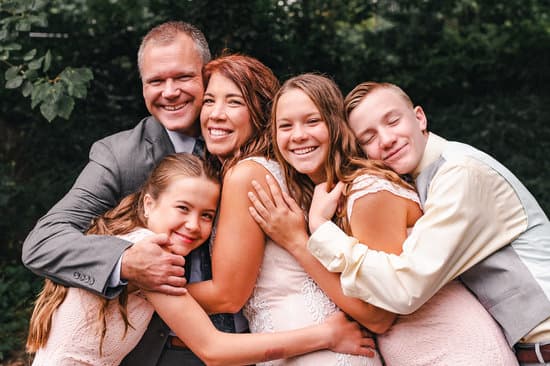A wedding ring meaning can vary greatly depending on cultural, religious, and personal perspectives. Understanding the significance of these timeless symbols goes beyond their material value, delving into the rich history and symbolism that has spanned centuries. From ancient civilizations to modern traditions, the evolution of wedding rings reflects the enduring nature of love and commitment.
The history of wedding rings is a fascinating journey that has its roots in ancient cultures such as the Egyptians, Greeks, and Romans. These early civilizations laid the groundwork for the tradition of exchanging rings as a symbol of unity and eternity. Over time, this custom has evolved into an integral part of modern marriage ceremonies, with each culture adding its own unique elements to the symbolism of wedding rings.
Exploring the origins and evolution of wedding rings provides valuable insights into the timeless significance behind these cherished symbols. From the circular shape representing eternal love to the choice of precious metals and gemstones signifying commitment and fidelity, each aspect contributes to the deeper meaning behind these unassuming pieces of jewelry. By understanding their historical context, we gain a greater appreciation for the enduring power that wedding rings hold in expressing love and devotion.
Symbolism of Wedding Rings
The circular shape of a wedding ring holds deep symbolism in the context of marriage. The unending circle represents eternity and the everlasting nature of love and commitment. Its continuous shape with no beginning or end signifies the unbreakable bond between two people. This symbolism is integral to the exchange of wedding rings during marriage ceremonies, as it represents the couple’s promise to love and cherish each other for eternity.
Precious metals such as gold, platinum, and silver are commonly used in wedding rings due to their enduring qualities. Gold, for example, is a symbol of purity and eternity, making it a popular choice for wedding bands. Platinum is known for its strength and durability, reflecting the strong foundation of a marriage. Similarly, silver symbolizes clarity and vision, serving as a reminder for couples to always have clear communication and understanding in their relationship.
Gemstones also hold significance in wedding rings, with diamonds being the most popular choice due to their unparalleled brilliance and hardness. Diamonds are believed to symbolize eternal love, purity, and strength – making them an ideal choice for representing a couple’s lasting commitment to each other.
When couples exchange wedding rings during their ceremony, they are not only symbolizing their commitment to each other but also expressing their individual styles and personalities through their ring choices. Some may opt for unique designs or engravings that hold personal significance or portray a message that is meaningful to them.
This act of personalization adds another layer of depth to the symbolism of wedding rings, making them more than just beautiful accessories but also tangible representations of a couple’s love and devotion.
Cultural and Religious Perspectives
In many Western cultures, the exchange of wedding rings is a deeply ingrained tradition that symbolizes the commitment and love between two partners. The circular shape of the ring represents eternity, with no beginning or end, signifying the everlasting bond of marriage. However, the significance of wedding rings varies widely across different cultures around the world.
For example, in some Eastern cultures like India, toe rings are traditionally worn by married women as a symbol of marital status. In Jewish culture, the wedding ring is placed on the index finger during the ceremony to represent that each partner is their own individual before coming together as one in marriage.
Religious beliefs also play a significant role in shaping the meaning and customs surrounding wedding rings. In Christian ceremonies, wedding rings are blessed by a religious leader before they are exchanged between partners. The act of blessing the rings represents the couple’s commitment to upholding their vows within their faith. In Islamic cultures, it is customary for both partners to exchange simple gold bands without any engravings or precious stones as part of the marriage contract.
With globalization and cultural exchange, modern couples often blend traditional and contemporary elements into their wedding ring customs. While some couples from diverse cultural backgrounds may choose to adhere strictly to traditional customs, others may opt for personalized wedding ring designs that combine symbols and motifs from various cultures. These unique designs reflect not only the couple’s heritage but also their shared values and beliefs in their union.
As couples continue to navigate multiple cultural influences in today’s global society, wedding rings serve as a powerful expression of love and unity that transcends borders and traditions. This diversity enriches the symbolism behind wedding rings, allowing each couple to imbue their own unique meaning into this age-old symbol of commitment.
The Importance of the Ring Finger
The tradition of wearing a wedding ring on the fourth finger of the left hand can be traced back to ancient cultures and civilizations. This custom has endured for centuries and is deeply rooted in historical and cultural significance.
One of the prevailing beliefs behind this tradition dates back to ancient Egypt, where it was thought that the vein in the fourth finger of the left hand, also known as the “vena amoris” or vein of love, led directly to the heart. This symbolic connection between the ring finger and the heart has carried over into various cultures and has become a common practice in wedding ceremonies around the world.
In addition to its historical significance, the tradition of wearing a wedding ring on the ring finger also holds cultural and religious importance. In many Western cultures, including those in North America and Europe, this custom is deeply ingrained in marriage traditions.
Similarly, in many Eastern cultures such as India, China, and Japan, wearing the wedding ring on this particular finger is also significant. In some societies, it may even be considered taboo or disrespectful to wear a wedding ring on any other finger.
Furthermore, from a religious perspective, there are specific customs associated with wearing wedding rings on the fourth finger of the left hand within various faiths. For example, in Christian ceremonies, it is believed that this tradition symbolizes the bond between husband and wife as well as their commitment to God.
In Jewish weddings, there are specific rituals that involve placing the ring on this finger as part of traditional marriage rites. The significance of this practice spans across different belief systems and continues to play a pivotal role in weddings worldwide.
| Meaningful Data | Significance |
|---|---|
| Ancient Egyptian belief in “vena amoris” | Symbolic connection between heart and ring finger |
| Cultural and religious importance | Deeply ingrained in marriage traditions globally |
| Religious perspectives | The significance spans across different belief systems |
Personalization and Customization
As wedding ring styles continue to evolve, the trend of personalizing and customizing wedding rings has become increasingly popular. Couples are seeking ways to make their rings unique and meaningful, often by incorporating engraving, special designs, or symbolic elements that hold significance to them. This trend represents a shift towards valuing individuality and personal expression in the context of marriage.
Engraving is one of the most common methods of personalizing a wedding ring. Whether it’s a meaningful date, a special quote, or the couple’s initials, engraving adds a deeply personal touch to the ring. Some couples also choose to include unique designs or patterns that hold significance to their relationship, such as motifs inspired by nature, cultural symbols, or even elements from their love story.
In addition to engraving and unique designs, many couples opt for meaningful symbols in their wedding rings. These symbols can range from religious icons and cultural emblems to representations of shared hobbies or experiences. For example, some couples incorporate infinity symbols to signify eternal love, while others choose to include birthstones or other gemstones with personal significance.
When it comes to customization and personalization of wedding rings, the possibilities are virtually endless. From traditional engravings to elaborate custom designs, each personalized ring reflects the unique bond and individuality of the couple.
| Wedding Ring Customization Ideas | Description |
|---|---|
| Engraving | Add initials, names, quotes or dates to personalize the ring |
| Unique Designs | Incorporate personalized patterns, motifs or symbols into the ring’s design |
| Meaningful Symbols | Include religious icons, cultural emblems or shared symbols with deep personal significance |
Modern Wedding Ring Trends
In the modern era, wedding ring trends have evolved to reflect changing attitudes towards marriage and love. As couples seek unique ways to express their commitment, new styles, materials, and designs have emerged in the world of wedding rings. Here are some of the latest trends that are shaping the landscape of wedding ring fashion:
- Alternative Metals: In recent years, there has been a surge in popularity for wedding rings made from alternative metals such as tungsten, titanium, and cobalt. These metals offer durability and a sleek, contemporary look that appeals to many modern couples.
- Vintage Inspired Designs: With a resurgence in vintage fashion trends, many couples are opting for wedding rings with intricate details and designs inspired by different eras. From art deco filigree patterns to Victorian-inspired floral motifs, vintage-inspired rings add a touch of timeless elegance to the modern love story.
- Mixed Metal Combinations: Mixing different metals such as rose gold, white gold, and platinum has become a popular trend in wedding ring design. These combinations create unique contrasts and add depth to the symbolism of eternal love and unity.
It is clear that as attitudes towards marriage and love continue to evolve, so do the preferences for wedding ring styles. The meaning behind these trends reflects a shift towards individuality and personal expression within the tradition of exchanging wedding rings. Couples are embracing new materials, designs, and customization options that allow them to symbolize their unique bond in a way that resonates with their personal values.
As we look towards the future, it is likely that we will continue to see an expansion of choices when it comes to wedding ring styles and personalization. Whether it’s through innovative materials or symbolic design elements, wedding rings will continue to serve as meaningful representations of love and commitment in an ever-changing world.
Wedding Ring Exchange Rituals
The exchange of wedding rings during a marriage ceremony is a deeply symbolic and emotional moment for couples. This ritual has been a part of wedding traditions for centuries and holds great significance in the commitment and love between partners.
The act of exchanging rings represents the couple’s promise to be faithful and devoted to each other for the rest of their lives. It is a powerful symbol of their unity and the beginning of their journey as a married couple.
During the wedding ring exchange, couples typically recite vows that express their love and devotion to one another. This is often accompanied by the placing of the rings on each other’s fingers, which further solidifies their commitment.
The circular shape of the rings represents eternity and unending love, while the precious metals symbolize the value and strength of their relationship. This exchange serves as a public declaration of the couple’s love and intention to spend their lives together, witnessed by their families, friends, and loved ones.
In many cultures and religious traditions, the wedding ring exchange is accompanied by specific rituals or blessings that add spiritual meaning to the ceremony. For example, in Christian weddings, there is often a prayer or blessing said over the rings before they are exchanged.
In Jewish ceremonies, the groom traditionally places the ring on his bride’s finger while reciting a biblical verse that symbolizes his commitment to her. These rituals add layers of depth to the emotional impact of exchanging wedding rings during ceremonies, making it a sacred and memorable moment for couples worldwide.
The Future of Wedding Rings
As marriage traditions continue to evolve and adapt, so too may the meaning and symbolism of wedding rings. In the future, we may see an even greater emphasis on personalization and customization as couples seek to imbue their wedding rings with deeper significance.
From unique designs and engravings to incorporating meaningful symbols or stones, the trend of customizing wedding rings is likely to grow in popularity. This allows couples to truly make their wedding rings a reflection of their love and commitment to each other.
Furthermore, as society becomes more inclusive and diverse, we may see a shift in the traditional meaning of wedding rings. The significance of the circular shape and precious metals may take on new interpretations that are more inclusive of different cultural and religious perspectives. The evolving meaning of wedding rings may also reflect changing attitudes towards marriage itself, with an emphasis on equality, partnership, and individuality within a union.
In addition, advancements in technology and design may lead to innovative materials and styles for wedding rings. Whether it’s sustainable materials or cutting-edge craftsmanship, the future of wedding rings may hold exciting possibilities for couples seeking to symbolize their love in unique and meaningful ways.
Despite these potential changes, one thing remains constant: the profound emotional and symbolic impact of exchanging wedding rings during ceremonies will continue to be a cherished tradition for couples around the world – a timeless expression of eternal love and commitment.
Frequently Asked Questions
What Does a Wedding Ring Symbolize?
A wedding ring symbolizes commitment, love, and unity between two people. It is a physical representation of the vows exchanged during the wedding ceremony and serves as a reminder of the couple’s promise to each other.
What Does the Bible Say About a Wedding Ring?
The Bible does not specifically mention wedding rings, as they were not common in ancient times. However, the concept of a ring as a symbol of unending love and commitment aligns with biblical teachings on marriage and the importance of faithfulness and unity in relationships.
What Is the Origin of a Wedding Ring?
The tradition of exchanging rings during a wedding ceremony dates back to ancient Egypt and Rome. The circular shape of the ring is said to symbolize eternity, with no beginning or end, representing the everlasting nature of marriage. Over time, this tradition has evolved into a widespread custom in many cultures around the world.

I have been involved in marriages for over 20 years helping couples and singles understand more about them.





